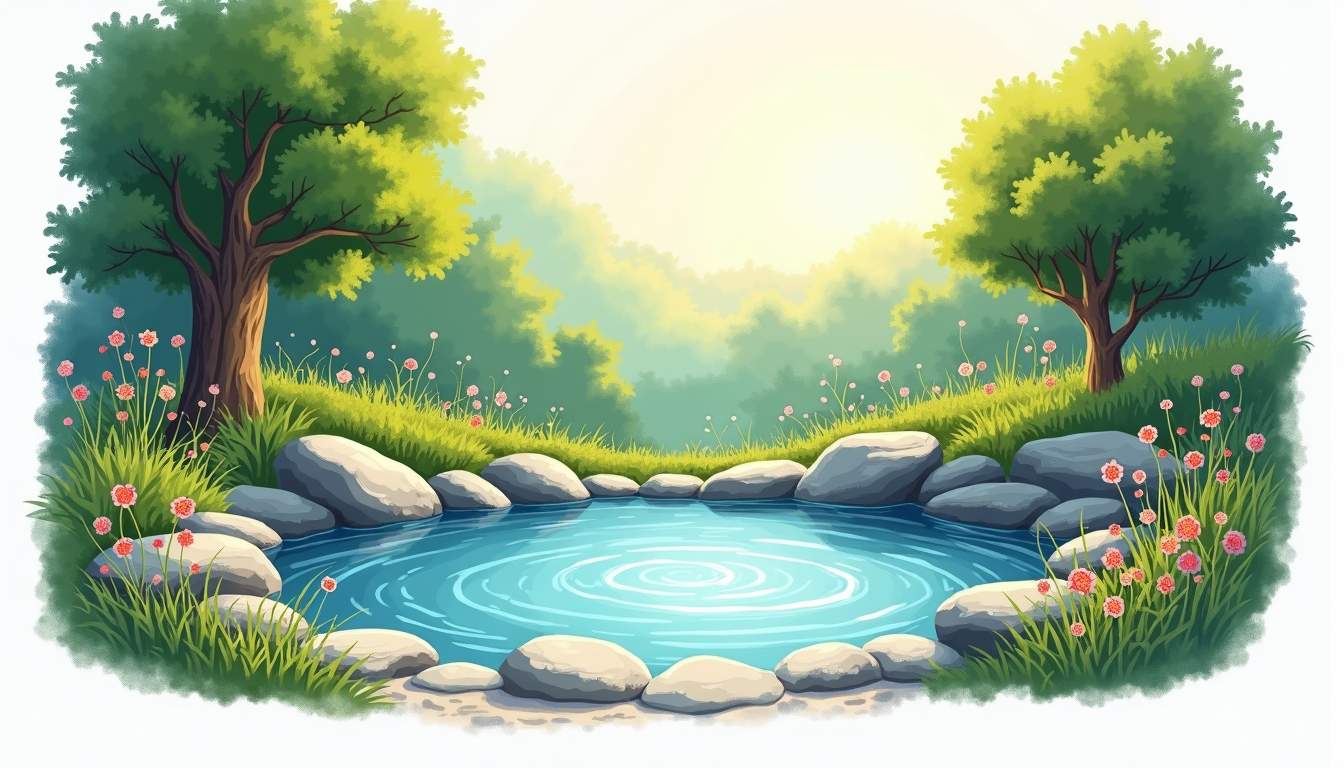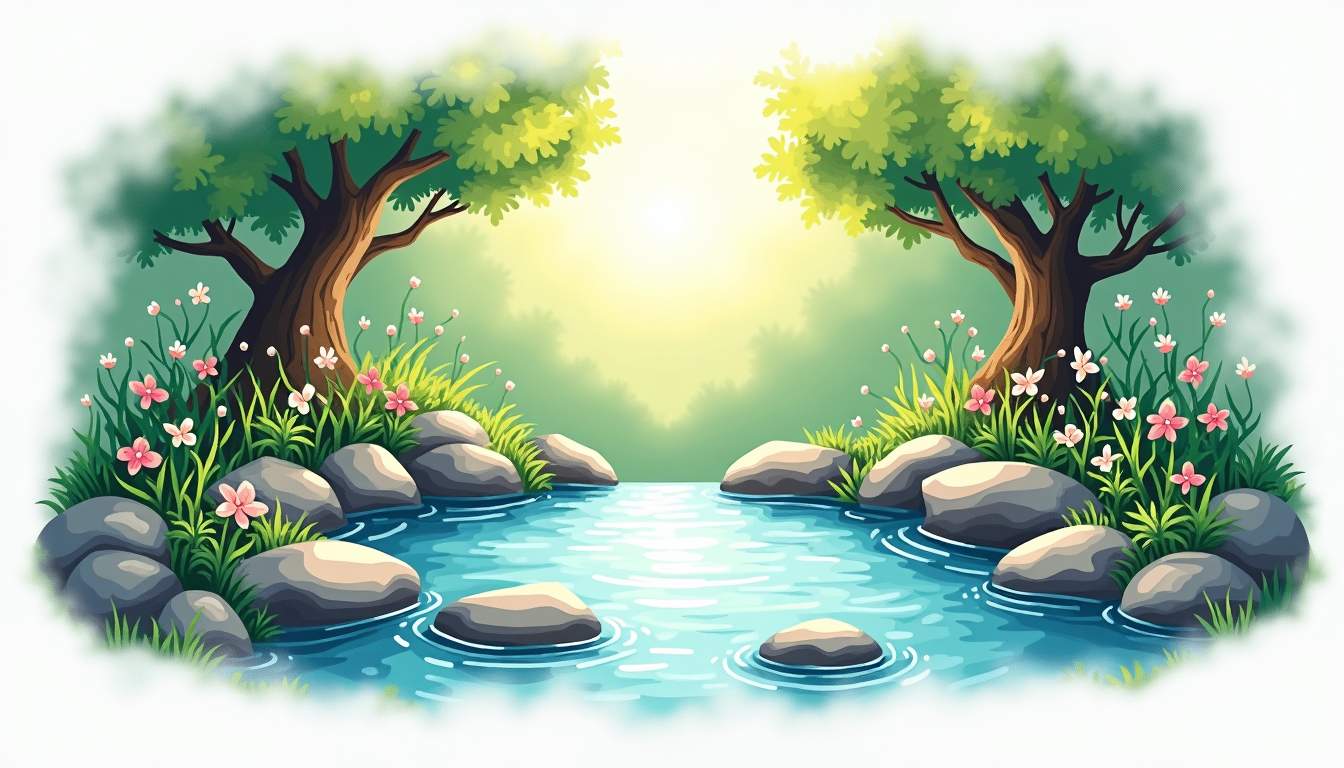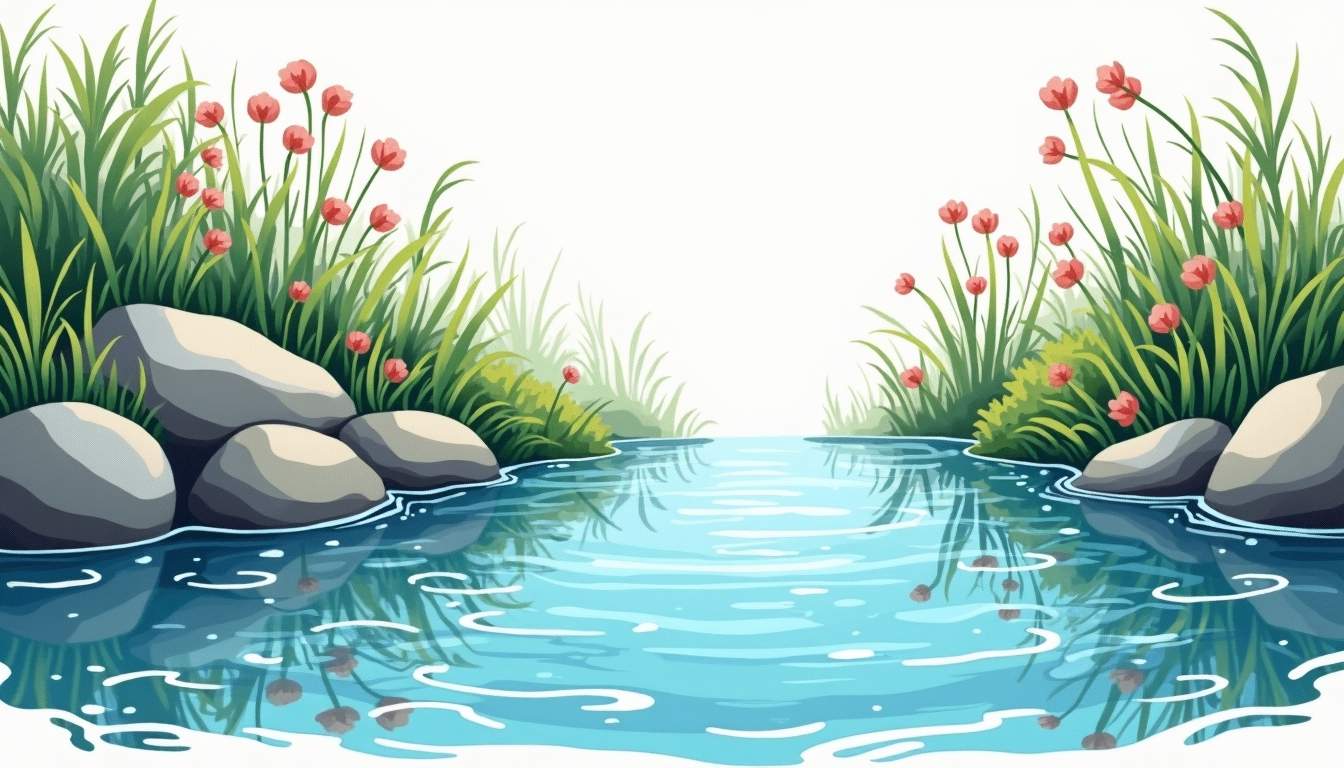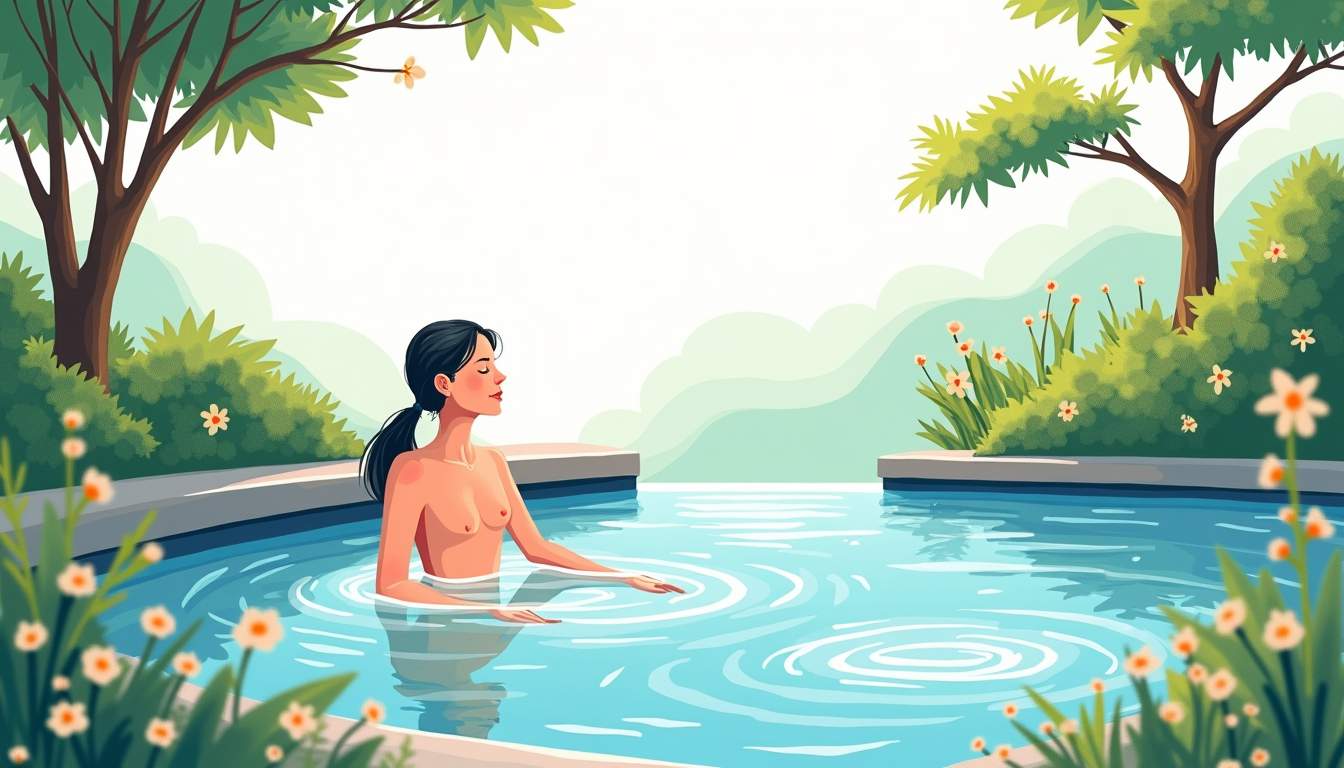
Stepping outside can feel like a small miracle. A single breath of fresh air, warmed by sunlight or cooled by a gentle breeze, can reset the nervous system in ways a busy day in front of screens rarely allows. This article explores the simple, accessible, and scientifically supported ways that the natural world functions as a spa — no reservation required. Whether a backyard, a neighborhood park, a riverside path, or a rooftop garden, nature’s treatments are free, abundant, and remarkably effective.
The human body evolved in natural environments for hundreds of thousands of years. Modern indoor lifestyles have truncated those experiences, but the physiology that responds to trees, water, and sunlight remains intact. Exposure to natural elements triggers hormonal and neural shifts: cortisol levels drop, serotonin and dopamine balance improves, and parasympathetic activity — the “rest and digest” response — increases. These changes make the body feel calmer, the mind clearer, and the senses more attuned.

Beyond biochemistry, there is an aesthetic and sensory harmony in natural settings. Patterns found in foliage, the sound of leaves stirred by wind, the irregular geometry of a shoreline — these features engage visual and auditory processing in a way that is intrinsically soothing. The result is similar to what happens during a spa treatment: tension releases, breathing slows, and attention rests on the present moment.
Even short interactions with nature deliver measurable benefits. A five- to ten-minute walk among trees or along a body of water can improve mood and attention. These micro-treatments are ideal for busy schedules: step outside during a work break, eat lunch on a bench beneath a tree, or spend a few minutes standing at an open window with eyes closed and breathing deeply. The emphasis is on regular, brief exposures rather than infrequent, long excursions.
Simple practices enhance these moments. Try a single-cycle breathing exercise while focusing on a natural object: inhale deeply for four counts, hold for two, exhale for six. Let the mind track the sensation of air and the rhythm of the environment — a bird’s chirp, the rustle of leaves, distant traffic muffled by greenery. This combination of sensory grounding and regulated breathing accelerates relaxation, sharpening the mental return to tasks afterwards.
Originating in Japan as shinrin-yoku, forest bathing is a practice of immersing the senses in a woodland environment. It is not a hike with a destination or a jog for fitness; rather, it is a slow, receptive engagement with trees, soil, stream, and sky. Research has linked forest bathing to lower blood pressure, reduced stress hormones, improved immune function, and enhanced mood. Guided sessions teach techniques for deep listening and mindful observation, but even solo, unstructured time among trees can be powerful.
Key elements include slowing down, using all five senses, and avoiding digital distractions. Walk at a pace that allows noticing details — the texture of bark, the scent of pine, the play of light on a fern. Sit quietly beside a trunk or at the edge of a clearing to absorb ambient sounds. A consistent practice, even once per week, accumulates benefits that ripple into work, relationships, and overall well-being.
Water is one of the most universally restorative elements in nature. The sound of flowing water has an innate calming quality, likely because it signals the presence of a life-sustaining resource. Rivers, creeks, shorelines, and fountains all provide auditory and visual input that reduces mental chatter and fosters relaxation. The term “blue mind” describes the mild meditative state induced by proximity to water, characterized by lower stress and clearer thinking.

Practical ways to use water as a spa are abundant: plan regular walks near streams or lakes, sit on a bench with a view of a fountain, or simply watch rain from a sheltered porch. When safe and appropriate, wading or swimming adds the grounding sensation of water against the skin, which can relieve muscle tension and induce a gentle meditative state. Even an indoor water feature or a small tabletop fountain can reproduce some of the calming effects.
Sunlight is central to nature’s restorative toolkit. Exposure to natural light resets circadian rhythms, improving sleep quality and daytime alertness. Skin exposure to sunlight also stimulates vitamin D production, which supports bone health and has been linked to mood regulation. Careful, moderate sun exposure — avoiding sunburn and using protection during strong midday rays — yields substantial benefits without unnecessary risk.
Morning sunlight is especially valuable. A brief period outside within an hour or two of waking helps anchor the body clock, making it easier to fall asleep that night and strengthening overall energy patterns. For urban dwellers, stepping onto a balcony, walking for ten minutes with the face tilted to the sun, or even enjoying breakfast on a sunlit stoop can create this anchoring effect.
Grounding, or earthing, refers to physical contact with the Earth — walking barefoot on grass, sand, or soil. Some studies and anecdotal reports suggest grounding reduces inflammation, improves sleep, and enhances general well-being. The mechanisms are still being explored, but the tactile feedback from standing on natural surfaces encourages balance, posture awareness, and proprioception, all of which contribute to a relaxed bodily state.
Grounding practices are simple: take shoes off briefly during a backyard break, practice short yoga or stretching sessions on grass, or stand barefoot on a sandy beach and let the toes dig into the surface. For those with mobility limitations, placing hands on natural surfaces or leaning against a tree provides similar sensory input and connection.
Nature isn’t limited to forests and coasts; urban environments offer their own green and blue spaces. Pocket parks, rooftop gardens, tree-lined streets, and even window boxes create micro-ecosystems that deliver restorative experiences. Cities that prioritize walkability and green infrastructure not only look better but also improve residents’ physical and mental health.
Maximizing these urban resources is practical: identify the nearest park and make it a regular stop, incorporate tree-lined routes into daily commutes, or design a small balcony garden with herbs and flowering plants. Soundscapes matter in cities too — sitting near a water feature or under a canopy of leaves can mask traffic noise and provide a restful acoustic backdrop.
Thoughtful sensory design amplifies nature’s spa effects in cities. Planting fragrant species near benches, creating layered plantings to encourage birds and pollinators, and integrating water elements into plazas creates multisensory environments that invite lingering. These features transform sterile concrete into restorative rooms where people can take a deliberate pause.
Rituals make nature’s benefits more predictable and sustainable. Committing to a daily five-minute outdoor breath, a weekly walk in a favorite spot, or an evening ritual of watching the sunset creates anchors throughout the week. Routines reduce decision fatigue and turn spontaneous nature exposure into a reliable source of restoration.

Rituals can be sensory-focused, social, or contemplative. Sharing a morning cup of tea on a porch, meeting a friend for a weekly park walk, or ending the day with ten minutes of star-gazing all count. The key is consistency and intention: show up, unplug, and allow the environment to do the work of relaxation.
Practicality ensures nature becomes a repeatable habit rather than an occasional treat. Start by mapping local green and blue spaces and creating a flexible plan that fits daily routines. Pack comfortable shoes, a light blanket, and a water bottle. Use technology sparingly: a single timer to mark a five- or ten-minute break is useful, but avoid scrolling while in nature. Treat these moments as appointments with health rather than idle time.
When access to green spaces is limited, bring nature indoors. Houseplants, natural light, a small water fountain, or a collection of rocks and shells can fashion an indoor spa corner. The sensory textures of living plants, the filtered light through leaves, and the sound of water replicate many outdoor benefits. Even short windowsill rituals — planting new seeds, rotating a pot to follow the sun — create tactile engagement with life cycles and seasonal change.
The science supporting nature’s restorative effects is robust and growing, spanning psychology, neuroscience, immunology, and urban planning. Yet the most important takeaway is simple: mental and physical health improve when time is spent outside. That improvement does not require elaborate gear or long trips, only regular, mindful engagement with the natural elements that remain accessible in most environments.
Nature functions as an all-purpose spa: it calms, it clarifies, it heals. The treatments are democratic — available to those with green thumbs and to those with two left feet, to apartment dwellers and to small-town residents. What matters is the choice to step outside, breathe, and let the world do what it has done for millennia: restore balance, reawaken senses, and remind the body what ease feels like.
Medical professionals and wellness practitioners increasingly prescribe time outdoors as part of comprehensive care. The prescription is simple: slow down, expose the senses to natural environments, stay consistent, and let the rhythms of light, water, soil, and wind guide a return to balance. Those who answer that call often find improvements that ripple quietly through sleep, mood, productivity, and relationships.
Nature’s spa is democratic, immediate, and effective. No concierge is needed; the doorway is the threshold. A few minutes each day is the opening move in a lifelong practice of restoration. The result is subtle at first but cumulative: calmer nerves, clearer thinking, and a stronger, more resilient connection to place and to self.
Embrace the restorative power of nature daily in a community designed to bring luxury and the great outdoors together. At Tennessee National, you’ll find scenic trails, waterfront views, and serene green spaces alongside exceptional amenities like a Greg Norman Signature Golf Course and private marina. Whether you seek a move-in ready home or a custom build, experience resort-style living that nurtures your body and mind. Schedule a Private Tour today and start making nature’s spa a part of your everyday life.